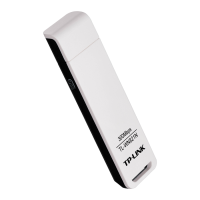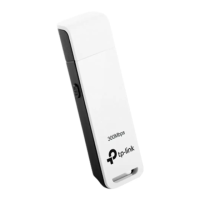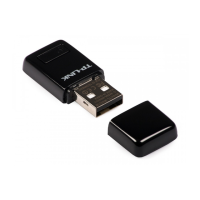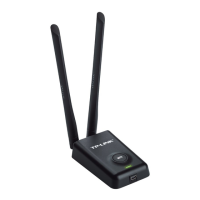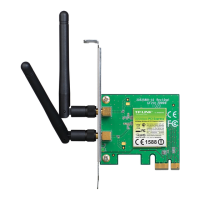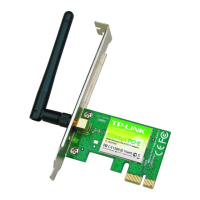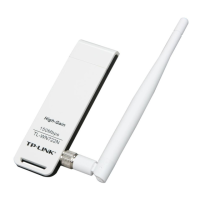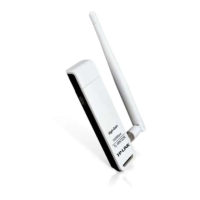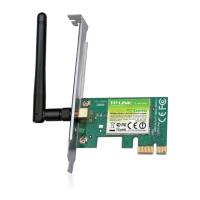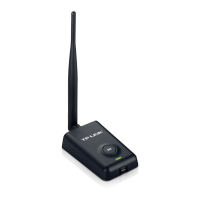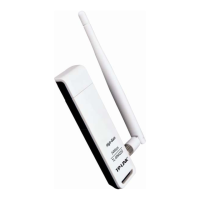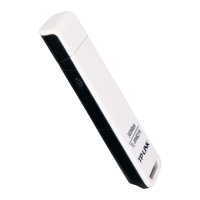
Do you have a question about the TP-Link TL-WN821N - NT WIRELESS N USB ADAPTERATHEROS2T2R 2.4GHZ 802.11G B ND RTL and is the answer not in the manual?
| Model | TL-WN821N |
|---|---|
| Wireless Standards | IEEE 802.11b/g/n |
| Frequency | 2.4GHz |
| Interface | USB 2.0 |
| Antenna Type | Internal |
| Category | Wireless Adapter |
| Wireless Security | 64/128-bit WEP, WPA, WPA2 |
| Operating Systems Supported | Windows 10/8.1/8/7/XP, Mac OS X, Linux |
Details compliance with FCC RF Exposure (SAR) limits.
Defines terms used in the user guide for clarity.
Describes the adapter as an 802.11n client device for high-speed wireless performance.
Details the adapter's compliance, security, speed, and interface features.
Describes the meaning of different LED indications and their working statuses.
Explains how to connect the adapter directly or via USB cable.
Guides the user through installing the TP-LINK Wireless N Client Utility and drivers.
Details the initial setup wizard screens for installing the adapter's software.
The Current Status tab contains general information about the program and its operations.
Introduces the Profile Management tab and its tools for managing network profiles.
Guides on how to add new or modify existing network configuration profiles.
Details configuration settings for Profile Name, Client Name, and Network Names (SSIDs).
Explains how to configure security options like WPA/WPA2, 802.1x, and Pre-Shared Key.
Covers advanced settings like Power Save Mode, Network Type, and Wireless Mode.
Explains Infrastructure/Ad-Hoc modes and 802.11 authentication methods.
Instructions for removing, activating, and exporting saved network profiles.
Guides on importing profiles and scanning for available wireless networks.
Describes how to set up automatic profile selection for connecting to networks.
Explains priority settings and enabling auto profile selection feature.
How to view adapter and NDIS driver details like Card Name and MAC Address.
Shows how to view advanced statistics for received and transmitted frames.
Introduces QSS (Quick Secure Setup) for quickly adding new wireless devices.
Details the steps for configuring QSS using the Push Button Configuration method.
Shows the final screen indicating successful QSS wireless configuration.
Explains how to configure QSS using the PIN method to connect devices.
Step-by-step guide to enter the adapter's PIN into the access point device.
Instructions for entering the router's PIN to configure the adapter.
Guides on configuring the adapter for playing PSP XLink Online games.
Steps to configure network connections and properties for the application.
How to scan for and activate the specific network connection for the application.
Navigating to Arena Mode to join games for the application.
Details the normal interface, standards, OS, data rates, modulation, and security specifications.
Lists operating temperature, storage temperature, and humidity requirements.
Defines wireless standards like 802.11b, 802.11g, and 802.11n.
Defines Ad-hoc and Infrastructure network modes.
Explains DSSS and FHSS spread spectrum technologies.
Defines SSID (Service Set Identification) and WEP (Wired Equivalent Privacy).
Defines Wi-Fi, WLAN (Wireless Local Area Network), and WPA (Wi-Fi Protected Access).
